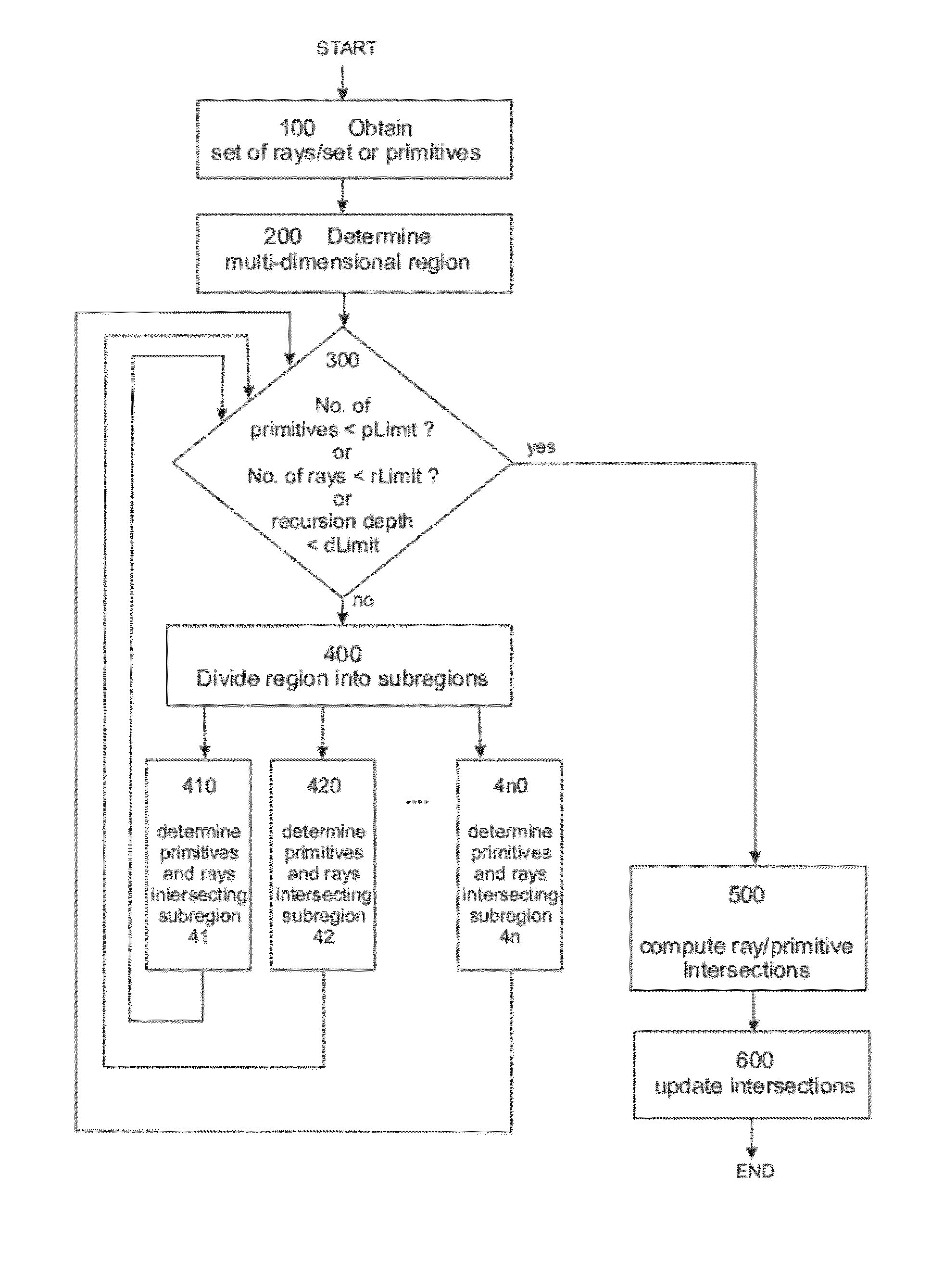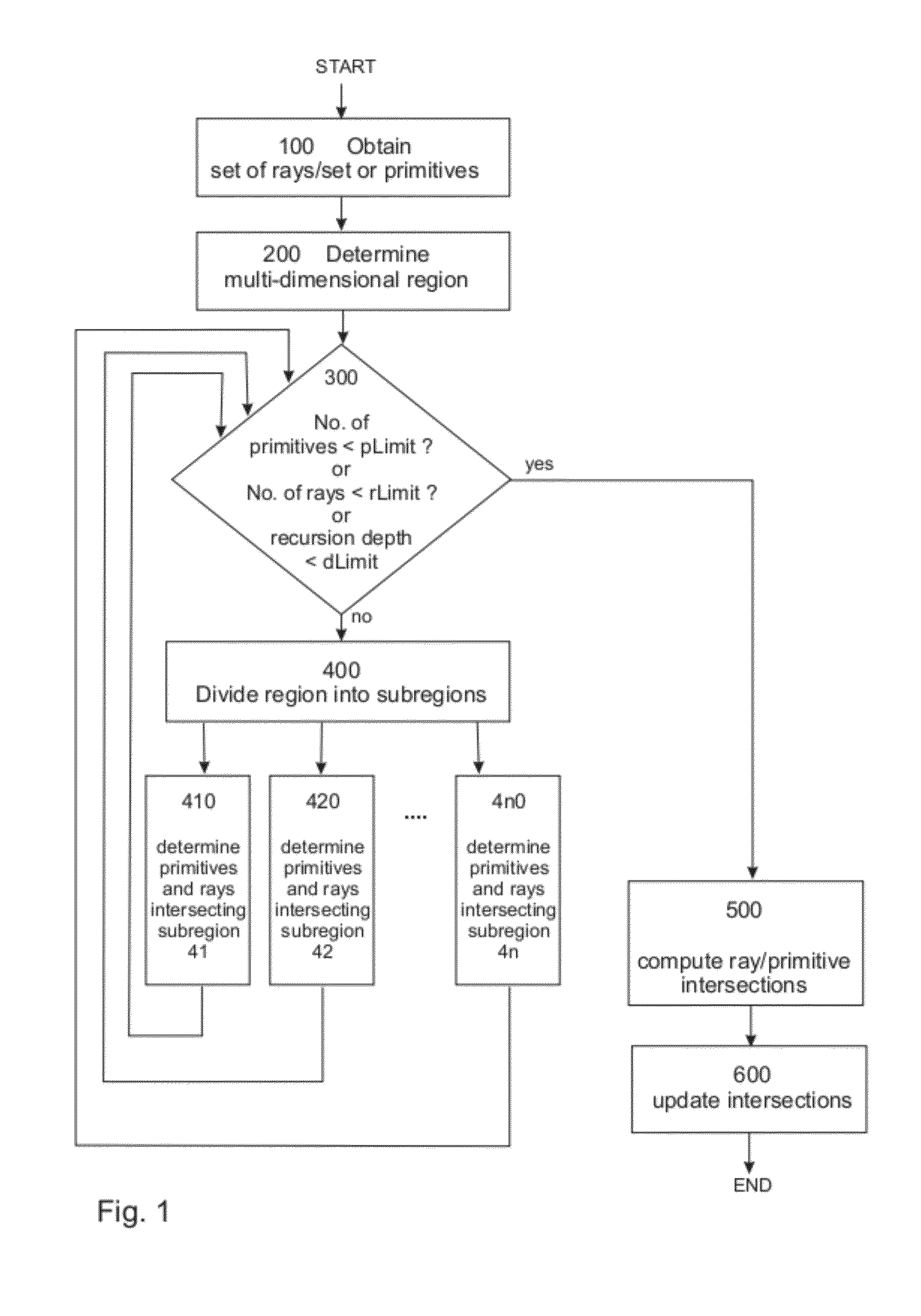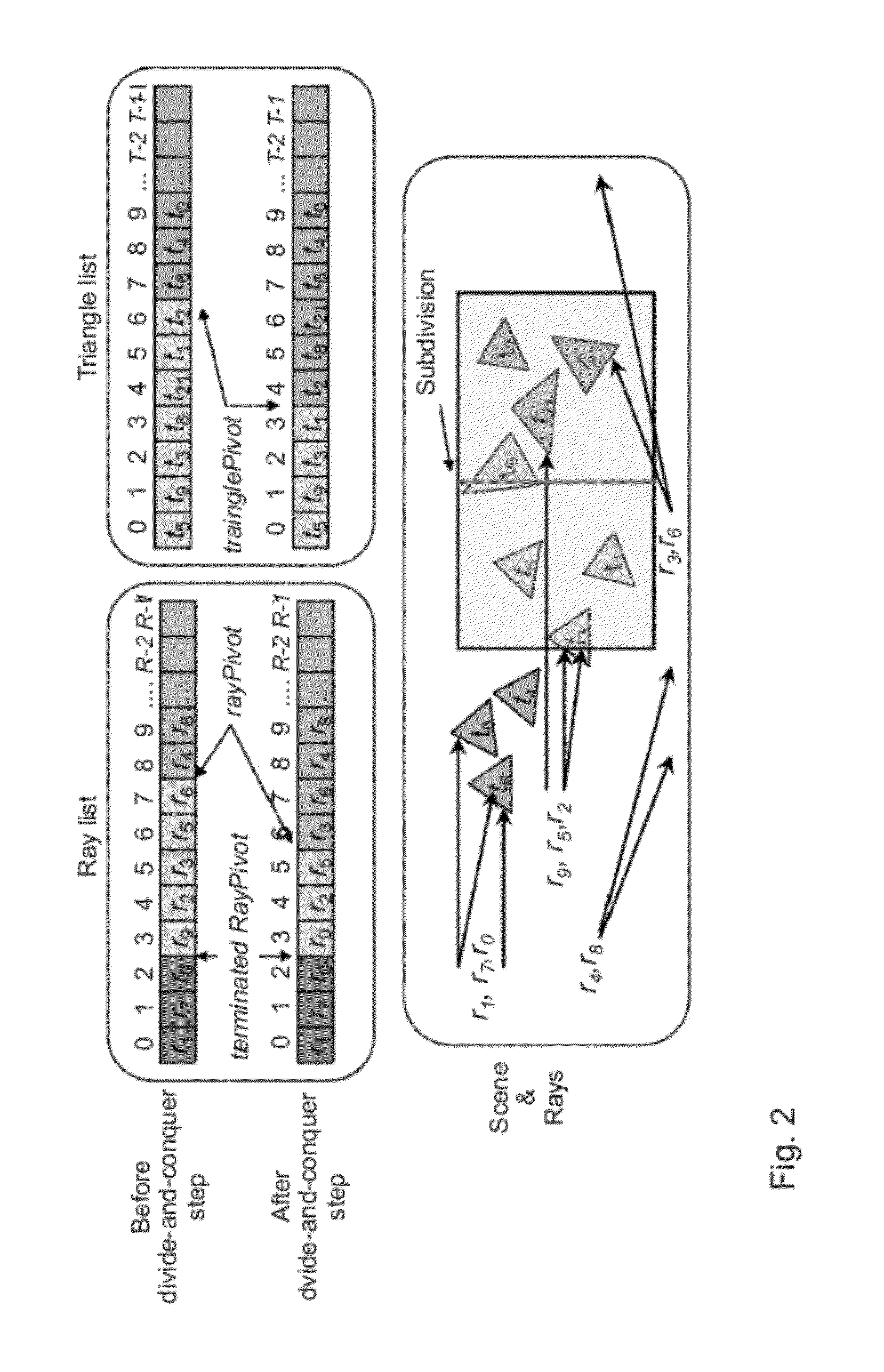Direct ray tracing of 3D scenes
a direct ray tracing and scene technology, applied in the field of computer graphics images of 3d, can solve the problems of nave ray tracing, millions of time slower than current approaches, and the trivial complexity of this algorithm, so as to accelerate the algorithm
- Summary
- Abstract
- Description
- Claims
- Application Information
AI Technical Summary
Benefits of technology
Problems solved by technology
Method used
Image
Examples
Embodiment Construction
[0042]The naïve ray-tracing (naïve RT) algorithm comprises two nested loops computing every possible ray-triangle intersection in a scene at a complexity of O(primitives×rays). This naïve ray-tracing approach is processing far too many intersections. The present disclosure suggests simplifying the problem by only intersecting subsets of rays with subsets of triangles, which will be determined by a divide-and-conquer scheme using spatial subdivisions, as in the Algorithm 1:
[0043]
Algorithm 1 Divide-And-Conquer Ray-Tracingprocedure DACRT( SpaceRegion E, SetOfRays R, SetOfPrimitives P)begin if R.size then NaiveRT ( R, T ); else begin {Ei} = SubdivideSpaceRegion ( E ) for each Ei do SetOfRays R′ = R ∩ Ei; SetOfPrimitives P′ = P ∩ Ei; DACRT ( Ei, R′, P′ ); end do endend
[0044]This method is termed divide-and-conquer ray tracing (DACRT). The DACRT algorithm first compares—step 300—the number of primitives, which are triangles in the examples shown herein, and th...
PUM
 Login to View More
Login to View More Abstract
Description
Claims
Application Information
 Login to View More
Login to View More - R&D
- Intellectual Property
- Life Sciences
- Materials
- Tech Scout
- Unparalleled Data Quality
- Higher Quality Content
- 60% Fewer Hallucinations
Browse by: Latest US Patents, China's latest patents, Technical Efficacy Thesaurus, Application Domain, Technology Topic, Popular Technical Reports.
© 2025 PatSnap. All rights reserved.Legal|Privacy policy|Modern Slavery Act Transparency Statement|Sitemap|About US| Contact US: help@patsnap.com



